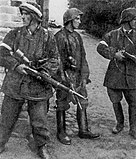Biography
Born on November 21, 1913, in Warsaw, he frequently changed locations as a child, living in Kamieniec Podolski, Zakopane, Romania, to finally return to Warsaw, where he attended the Jan Zamoyski Middle School. In 1926, Rogowski moved to Rawicz, to study at the Third Cadet Corps. After graduation (1932), he studied at Warsaw University of Technology and Warsaw University of Life Sciences, but did not complete his studies.
Rogowski was the son of a nobleman Boleslaw and Julia née Lipkowska. His father was a landowner in Russian Podolia and Ukraine. As officer of the Imperial Russian Army, he was killed in action in Bessarabia, in 1916. In 1933 - 1934, Jan attended the School of Artillery Reserve Officers at Wlodzimierz Wolynski, and in 1935, he took a job at the Ursus Factory. Some time in the late 1930s, je moved to Volhynia, to oversee the real estate of Chinocze, located near Sarny. He was an active member of the National Party and Camp of Great Poland.
In the 1939 Invasion of Poland, he served as platoon commandant of the 50th Kresy Rifle Infantry Regiment. On September 11, 1939, Rogowski was transferred to the unit of Major Leon Fudakowski, and on November 19, he crossed the Polish-Hungarian border. In January 1940, he reached France, where he was attached to the 3rd Light Artillery Regiment. In June 1940 Rogowski was evacuated to Great Britain, where he served in the 1st Rifle Brigade, and volunteered to be dropped over occupied Poland.
After training, he became a member of the elite special operations group, Cichociemni, and was dropped over Poland in the night of March 3/4, 1942, during Operation Collar, carried out by Captain Antoni Voelnagel. The drop took place 9 kilometers northwest of Wyszkow, and soon afterwards, Rogowski was attached to the Second Unit of Wachlarz, as deputy of Jan Piwnik. He joined his unit in Rowne, Volhynia, in June 1942. In July of that year, both Rogowski and Piwnik were captured by the Germans, and sent to prison. They managed to escape, and reached Warsaw in September.
After the dissolution of Wachlarz (March 1943), Rogowski joined Kedyw, as commander of Kielce Area. He took part in several raids, including the legendary Pinsk Prison Raid (January 1943). In the night of July 2/3, 1943, Rogowski, together with his unit, attacked a German train near Suchedniow. During another raid (July 12/13), he was seriously wounded. Jan Rogowski was arrested by the Gestapo on January 3, 1944, while crossing the Pilica river bridge in Bialobrzegi. Together with Andrzej Orwid-Eljaszewicz, he was driving a truck with winter supplies for the local Home Army units, and the Germans were informed by a Gestapo agent, Jerzy Wojnowski (“Motor”). Taken to a Gestapo prison in Radom, Rogowski was tortured, but did not reveal any information to his oppressors. On February 16, 1944, he was sentenced to death and immediately shot.
Jan Rogowski was awarded Silver Cross of the Virtuti Militari (Nr. 13633), and the Cross of Valour (Poland).
In 1980 in St. Hyacinth's Church, Warsaw, a commemorative tablet, dedicated to Cichociemni was unveiled, with 110 names, including Jan Rogowski. On May 3, 1993, in Bialobrzegi, in front of a parish church, a monument, commemorating the arrest of Rogowski and Orwid-Eljaszewicz was unveiled.
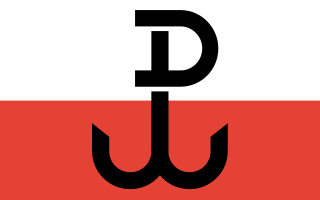
The Home Army was the dominant resistance movement in German-occupied Poland during World War II. The Home Army was formed in February 1942 from the earlier Związek Walki Zbrojnej established in the aftermath of the German and Soviet invasions in September 1939. Over the next two years, the Home Army absorbed most of the other Polish partisans and underground forces. Its allegiance was to the Polish government-in-exile in London, and it constituted the armed wing of what came to be known as the Polish Underground State. Estimates of the Home Army's 1944 strength range between 200,000 and 600,000. The latter number made the Home Army not only Poland's largest underground resistance movement but, along with Soviet and Yugoslav partisans, one of Europe's largest World War II underground movements.

Stefan Paweł Rowecki was a Polish general, journalist and the leader of the Armia Krajowa. He was murdered by the Gestapo in prison on the personal order of Heinrich Himmler.

Operation Tempest was a series of uprisings conducted during World War II against occupying German forces by the Polish Home Army, the dominant force in the Polish resistance.

Kedyw (Polish pronunciation:[ˈkɛdɨf], partial acronym of Kierownictwo Dywersji was a Polish World War II Home Army unit that conducted active and passive sabotage, propaganda and armed operations against Nazi German forces and collaborators.

The Silent Unseen were elite special-operations paratroopers of the Polish Army in exile, created in Great Britain during World War II to operate in occupied Poland.
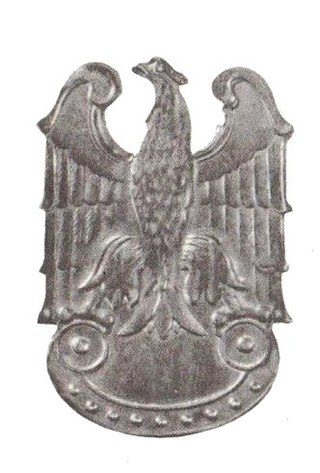
People's Army was a communist Soviet-backed partisan force set up by the communist Polish Workers' Party (PPR) during World War II. It was created on the order of the Polish State National Council on 1 January 1944. Its aims were to fight against Nazi Germany in occupied Poland, support the Soviet Red Army against the German forces and aid in the creation of a pro-Soviet communist government in Poland.

Peasant Battalions was a Polish resistance movement, guerrilla and partisan organisation, during World War II. The organisation was created in mid-1940 by the agrarian political party People's Party and by 1944 was partially integrated with the Armia Krajowa. At its height, in summer 1944 the organisation had 160,000 members.
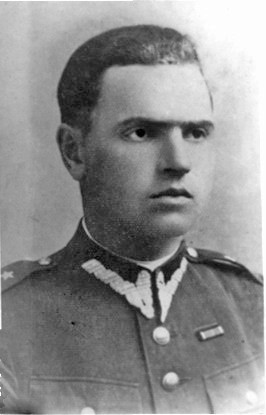
Jan Piwnik was a Polish World War II soldier, a cichociemny and a notable leader of the Home Army in the Świętokrzyskie Mountains. He used the nickname Ponury and Donat.
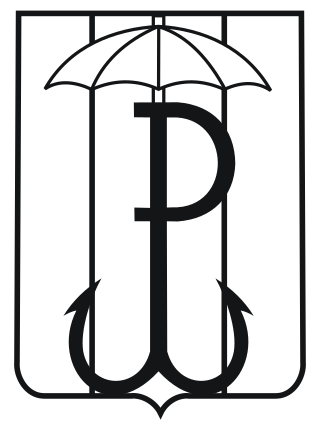
Battalion Parasol was a Scouting battalion of the Armia Krajowa, the primary Polish resistance movement in World War II. It consisted primarily of members of the Gray Ranks. The battalion distinguished itself in numerous underground operations and took part in the Warsaw Uprising of 1944, as an element of the Radosław Group.

General Leopold Okulicki was a general of the Polish Army and the last commander of the anti-Nazi underground Home Army during World War II. He was arrested after the war by the Soviet NKVD and died while imprisoned at Butyrka prison in Moscow.

Wachlarz was a Polish World War II resistance organization formed by the Armia Krajowa for sabotage duties behind the German Eastern Front, outside of the Polish borders. Its commanders were Lieutenant Colonel Jan Włodarkiewicz and Lieutenant Colonel Adam Remigiusz Grocholski.

Antoni Heda was a Polish military commander and a notable veteran of the Polish resistance movement in World War II and later independence movement against Soviet occupation following the war. Among the best known of his partisan actions was the raid on Communist prison in Kielce in August 1945, in which roughly 300 political prisoners were freed. His codename was "Szary" (Grey).
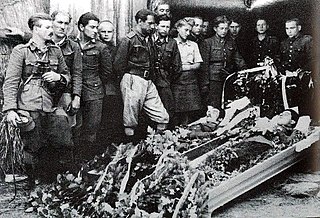
Hieronim Dekutowski was a Polish boy scout and soldier, who fought in Polish September Campaign, was a member of the elite forces Cichociemni, fought in the Home Army and after World War II, fought the communist regime as one of commanders of Wolność i Niezawisłość.

Adolf Pilch was a Polish resistance fighter during World War II. He became part of the Polish special forces (cichociemni) trained in the United Kingdom, and was parachuted into occupied Poland on 17 February 1943. There, as a member of the Armia Krajowa Polish resistance, he organized a cavalry partisan unit in the Nowogródek area, and broke through to the Kampinos forest near Warsaw, taking control of this area. At its height of operations his unit consisted of up to 1000 men. Between 3 June 1943 and 17 January 1945 his partisans fought in 235 battles.
Operation Heads was the code name for a series of assassinations of Nazi officials by the World War II Polish Resistance. Those targeted for assassination had been sentenced to death by Polish Underground Special Courts for crimes against Polish citizens during the World War II German occupation of Poland. The operation's code name, literally "Operation Little Heads", was a sardonic reference to the Totenkopf insignia on Nazi German SS uniforms and headgear.

Władysław KochańskiWładysław Kochański was an infantry captain in the Polish Army during World War II. He was then part of the Polish resistance army Armia Krajowa after Germany occupied Poland, leading the Cichociemni special forces paratrooper resistance unit, and was one of the leading organizers of the Polish defense of Volhynia.

Major Wacław Kopisto a.k.a. Wacław Jaworski, nom de guerreKra was an officer of the Polish Army in interwar Poland, infantry captain, and an underground soldier of the elite Polish Cichociemni unit during the occupation of Poland in World War II.
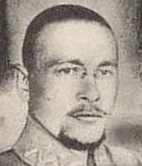
Bruno Edward Olbrycht was a soldier of the Austro-Hungarian Army and officer of the Polish Army both in the Second Polish Republic and postwar Poland. Born on 6 October 1895 in Sanok, Austrian Galicia, Olbrycht fought in Polish Legions in World War I, Polish–Ukrainian War, Polish–Soviet War and the Invasion of Poland. He died on 23 March 1951 in Kraków.

The 1943 Pinsk Prison raid was one of the most spectacular raids in the history of the Home Army and the Polish Underground State. It took place on 18 January 1943 in Pinsk, the town in Eastern Poland, which at that time was under German occupation as part of Reichskommissariat Ukraine. The purpose of the raid was to release a Cichociemni agent and his comrades, who had been captured by the Germans while trying to blow up the Horyn river bridge.

The Michniów massacre is a massacre that occurred on 12–13 July 1943 in the village of Michniów during German occupation of Poland when approximately 204 of its inhabitants, including women and children, were massacred by German Ordnungspolizei and Schutzstaffel.
